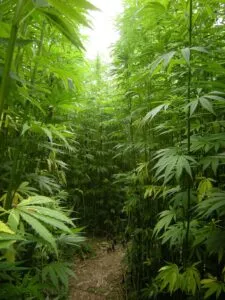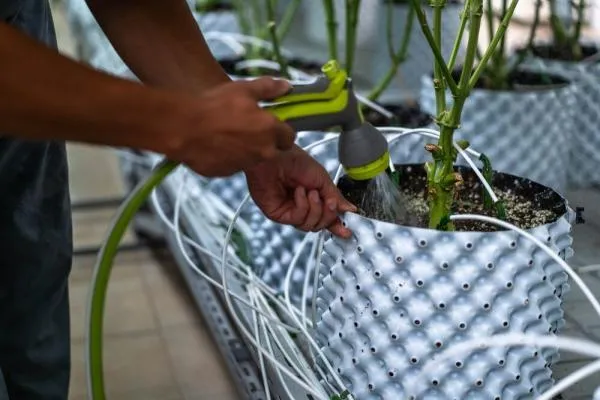As a grower, you have two options for where to grow your marijuana plants. You can keep it indoors, or you can move it out. Unfortunately, too often we hear how growing indoors is the only way to get the biggest and most beautiful buds. But while there might be some disadvantages, there are also some benefits you’ll only get by taking your bud to the great outdoors. Here are the pros and cons, as well as the do’s and don’ts, of growing cannabis outside.
Pros
- Low maintenance. Because you’ll have Mother Nature on your side, you won’t need to tend to your plants as much. While you’ll still need to visit the area often, you won’t be responsible for every single part of growing, as you are when growing indoors.
- Cheap. Again, Mother Nature is on your side so there’s no need for expensive lights or ventilation equipment.
- Bigger yields. There’s a myth that you can only get huge crops by growing inside, but this simply isn’t true. Outside, plants have the room they need to stretch and grow as large as they want or need to, so you’ll probably get bigger yields with an outdoor crop.
- Better flavor. Natural light is best for any plant, and you’ll be getting this from the sun when you grow outdoors. This enhances the entire plant, including the flavor you’ll get from the buds.
Cons
- Impractical at times. Growing marijuana outdoors isn’t practical for everyone. Those in the city might not have the space to grow outside, meaning they’ll have to set up a guerrilla site they’ll have to travel to.
- Lack of control. While growing outdoors is low-maintenance, it also means giving up some control. You can’t stop a drought from occurring, or always keep wild animals at bay. Anything from an early frost to a bug infestation can destroy your entire crop overnight; it’s just a risk you take when growing outdoors.
- Water. Marijuana plants need a lot of water, probably more than will be supplied by rain alone. Because of this, you’ll need to place your crop close to a water source, or be prepared to lug many buckets to the growing site.
Do
- Use an outdoor strain. Some strains have been cultivated specifically for growing outside. These strains will have an earlier flowering stage and harvest, meaning you don’t have to be as worried about frost.
- Plant in spring. Just like any other living thing, plants have a lifecycle and it typically begins in the spring. Plant during this time and you’ll harvest well before that first frost.
- Choose location wisely. Not all areas of outside get equal amounts of sunlight. Be sure the spot you pick gets at least 8-10 hours of direct sunlight a day.
Don’t
- Tell anyone. This is one of the best ways to get your spot completely picked of buds, or picked up by the authorities. Keep your growing ambitions, and your grow site, to yourself.
- Assume the soil is right. You’re outside; the soil must be perfect for growing, right? Wrong! Just because soil is natural doesn’t mean it’s the perfect medium for growing your plants. You’ll still need to test the pH level and add fertilizer to the soil to ensure your plant has the proper nutrients.
- Start too early. Yes, you may be eager to get your seeds in the dirt, but it's important that you time this correctly. Starting plants too early may actually stunt their flowering stage, giving you skinnier and less potent buds.
Growing outdoors can be a great experience and can give you even more buds than you could hope for. Know how to get the most out of this growing method and it might be the only you use from now on!











